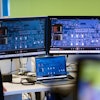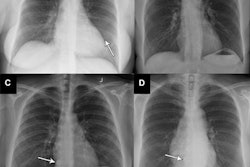The complexity of radiology exams should be considered a driving force over numbers of exams when estimating radiology workloads, according to research presented November 29 at RSNA 2023 in Chicago.
In a study at a tertiary imaging center in Sweden, investigators found that the data in CT and MRI studies for radiologists to interpret increased up to six times between 2009 and 2022, while the numbers of exams “only doubled,” said Tomas Bjerner, MD, PhD, of Linkoping University.
“This resulted in an increase in the workload for reading radiologists that is higher than when only the number of studies is considered,” he said.
Most radiology departments follow their production by tracking the number of exams and reports, with increases in these numbers well documented in the literature, Bjerner said. Yet an increasing number of patients also generates an increasing amount of data per scanned patient, especially given improvements in scanners, he said.
To provide more accurate workload estimates, Bjerner and colleagues tracked workloads for radiologists over time both based on the number of examinations and their complexity, which they calculated by the amount of stored data.
Between 2009 and 2022, the number of CT studies increased by 87.2% (a 4.9% increase per year) and the number of MRI exams increased by 101% (an increase of 5.5% per year), according to the findings.
Over the same period, however, increases in stored data eclipsed these increases in numbers, with data for CT exams increasing more than six times and data for MRI exams increasing more than five times.
| Increases in numbers of images and total data in CT and MRI exams for radiologists, 2009-2022 | ||
|---|---|---|
| CT | MRI | |
| Number of images | 459% (per year, 14%) | 364% (per year, 12%) |
| Average study | 229 to 765MB (234%) | 84.7 to 216MB (155%) |
| Stored data | 525% (per year, 15%) | 412% (per year, 13%) |
“The data in studies for radiologists to analyze increased five to six times, while the number of studies only doubled. This was mainly due to the increased number of images in studies,” Bjerner said.
Ultimately, this increase belies a positive trend, in that when there is more to look at, there is more for radiologists to see, he added.
“We want more images, we want to find more pathology, but we also have more incidental findings, meaning that there is a lot more work to do when you have to handle all this data, he said.
Nonetheless, workloads for reading radiologists are higher than when only the number of studies is considered, he said.
“This ratio is important when planning the workload in a radiology department,” Bjerner concluded.



















